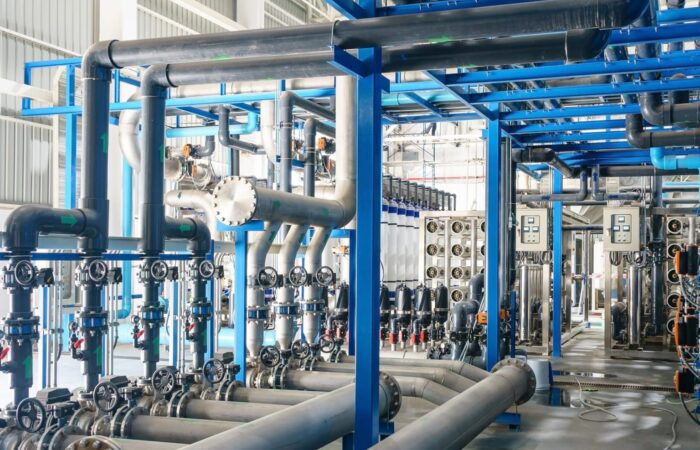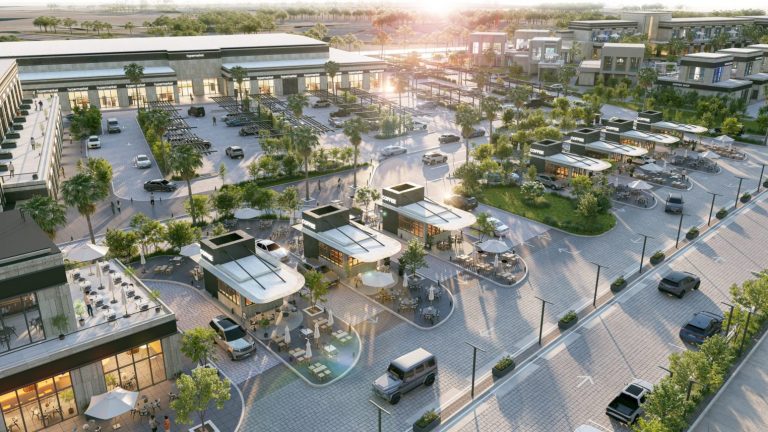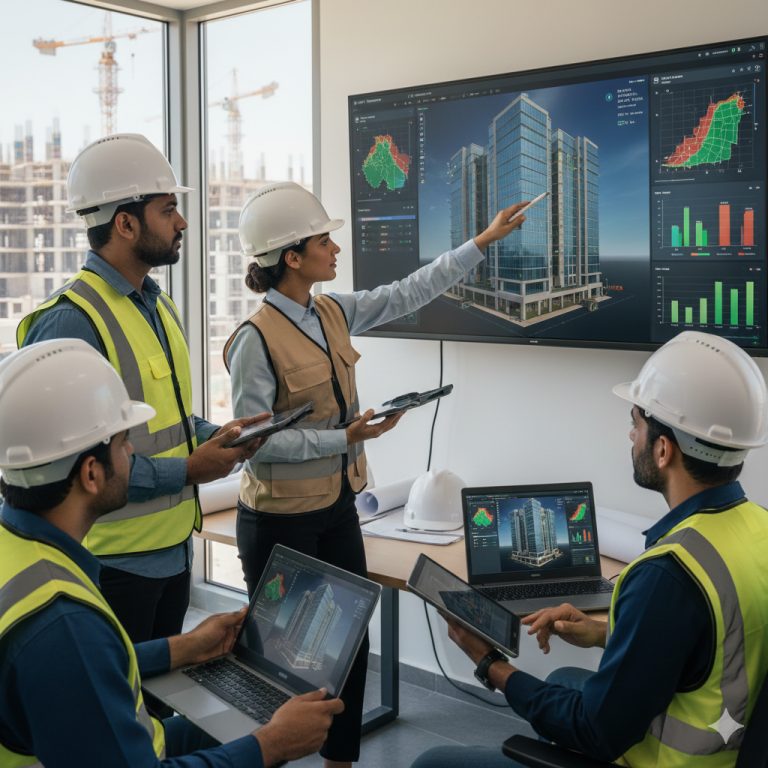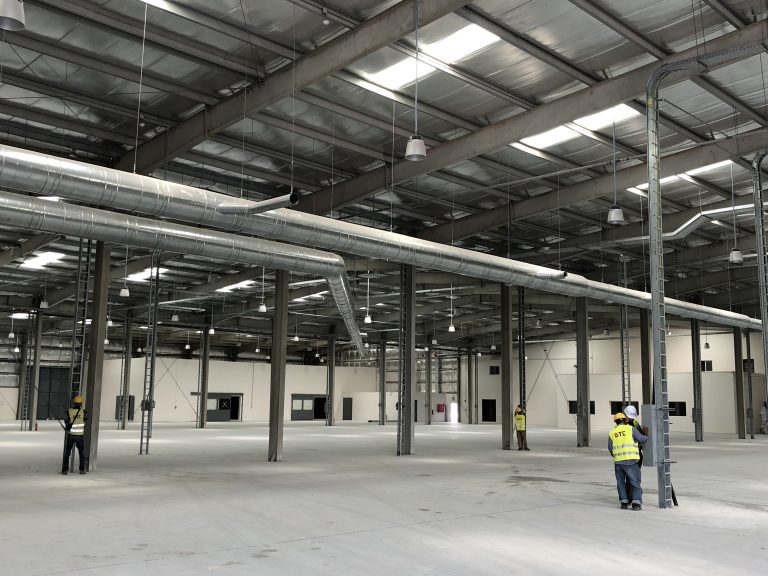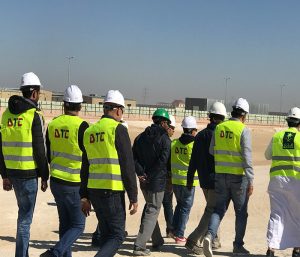“Managing MEP in Construction Projects in Saudi Arabia”
Chapter Titles:
Introduction to MEP Systems in Construction Projects
Importance of MEP Management in Saudi Arabian Construction Industry
Pre-Construction Planning and MEP Coordination
MEP Design and Documentation in Saudi Arabia
Procurement and Contracting for MEP Services in Saudi Arabia
MEP Project Scheduling and Resource Management
MEP Quality Control and Inspection in Saudi Arabian Construction Projects
MEP Commissioning and Testing in Saudi Arabian Construction Projects
MEP Risk Management and Mitigation in Saudi Arabian Construction Projects
MEP Project Management Tools and Software in Saudi Arabian Construction Projects
MEP Safety and Compliance in Saudi Arabian Construction Projects
Case Studies: Successful MEP Management in Saudi Arabian Construction Projects
Emerging Trends and Future of MEP Management in Saudi Arabian Construction Projects
Challenges and Opportunities in MEP Management in Saudi Arabian Construction Industry
Conclusion: Best Practices for MEP Management in Saudi Arabian Construction Projects
Book Introduction:
The construction industry in Saudi Arabia has been rapidly growing and evolving over the past few years. With the increase in the number of construction projects, the demand for efficient and effective management of mechanical, electrical, and plumbing (MEP) systems has become more critical than ever. MEP systems are an essential part of construction projects, and their proper management is essential for the successful completion of any project.
This book, “Managing MEP in Construction Projects in Saudi Arabia,” is a comprehensive guide to understanding the management of MEP systems in the Saudi Arabian construction industry. It provides detailed insights into the importance of MEP management, the challenges involved, and the best practices to overcome them.
The book is organized into 15 chapters, each covering a critical aspect of MEP management. The first chapter introduces the readers to MEP systems and their significance in construction projects. The second chapter highlights the importance of MEP management in the Saudi Arabian construction industry and the benefits it offers to project stakeholders.
The subsequent chapters cover various aspects of MEP management, including pre-construction planning and coordination, MEP design and documentation, procurement and contracting, project scheduling and resource management, quality control and inspection, commissioning and testing, risk management and mitigation, project management tools and software, safety and compliance, and more.
The book also includes case studies that showcase successful MEP management in Saudi Arabian construction projects, as well as emerging trends and future opportunities in MEP management.
This book is an essential resource for project managers, MEP engineers, consultants, and other professionals involved in the management of construction projects in Saudi Arabia. It offers practical insights, tools, and techniques that can help them improve the efficiency, quality, and safety of MEP systems in construction projects.
Chapter 1: Introduction to MEP Systems in Construction Projects
Mechanical, electrical, and plumbing (MEP) systems are critical components of construction projects. These systems are responsible for ensuring the proper functioning of buildings and infrastructure. MEP systems include heating, ventilation, and air conditioning (HVAC) systems, electrical systems, plumbing systems, fire protection systems, and more.
MEP systems are complex and require specialized knowledge and expertise to design, install, and manage. They also account for a significant portion of a project’s budget and schedule. Therefore, it is essential to manage MEP systems efficiently and effectively to ensure the successful completion of a construction project.
This chapter provides an introduction to MEP systems and their significance in construction projects. It covers the types of MEP systems, their functions, and the critical role they play in ensuring the comfort, safety, and sustainability of buildings and infrastructure.
The chapter also highlights the challenges involved in managing MEP systems, including the need for interdisciplinary coordination, the complexity of design and installation, and the integration of various systems. Finally, it outlines the benefits of efficient MEP management,
Chapter 1: Introduction to MEP Systems in Construction Projects (continued)
including improved project performance, enhanced energy efficiency, reduced operational costs, and increased occupant satisfaction.
The chapter concludes by emphasizing the importance of proper MEP management in construction projects, as well as the need for specialized knowledge, skills, and tools to ensure effective MEP coordination and integration.
In summary, this chapter provides an overview of MEP systems and their significance in construction projects, as well as the challenges and benefits of efficient MEP management. It sets the stage for the subsequent chapters, which delve deeper into the critical aspects of MEP management in Saudi Arabian construction projects.
Chapter 2: Importance of MEP Management in Saudi Arabian Construction Industry
The Saudi Arabian construction industry has been witnessing significant growth over the past decade, with a focus on infrastructure development, commercial and residential building construction, and industrial projects. The construction industry is a major contributor to the country’s economy, and the government has been investing heavily in this sector to support economic diversification and growth.
MEP systems are critical components of construction projects in Saudi Arabia, as they are responsible for ensuring the comfort, safety, and sustainability of buildings and infrastructure. The proper management of MEP systems is essential for the successful completion of any construction project.
This chapter highlights the importance of MEP management in the Saudi Arabian construction industry and the benefits it offers to project stakeholders. It covers the challenges involved in managing MEP systems in Saudi Arabian construction projects, including the need for interdisciplinary coordination, the complexity of design and installation, the shortage of skilled manpower, and the impact of environmental and regulatory factors.
The chapter also outlines the benefits of efficient MEP management in Saudi Arabian construction projects, such as improved project performance, enhanced energy efficiency, reduced operational costs, increased occupant satisfaction, and compliance with local regulations and standards.
Furthermore, the chapter provides insights into the current trends and best practices in MEP management in Saudi Arabian construction projects. It highlights the need for adopting innovative solutions and technologies, such as Building Information Modeling (BIM), prefabrication, and modular construction, to improve MEP coordination and integration.
In summary, this chapter underscores the importance of MEP management in the Saudi Arabian construction industry, as well as the challenges and benefits of efficient MEP management. It provides a context for the subsequent chapters, which offer practical insights and tools for managing MEP systems in Saudi Arabian construction projects.
Chapter 3: Regulatory and Environmental Factors Affecting MEP Management in Saudi Arabian Construction Projects
MEP systems in Saudi Arabian construction projects are subject to various regulatory and environmental factors that affect their design, installation, operation, and maintenance. This chapter provides an overview of the regulatory and environmental factors that impact MEP management in Saudi Arabian construction projects.
The chapter begins by examining the regulatory framework governing MEP systems in Saudi Arabia. It discusses the local regulations and standards that govern the design, installation, and operation of MEP systems in different types of construction projects, such as commercial buildings, residential buildings, and industrial facilities. It also highlights the role of government agencies, such as the Saudi Arabian Standards Organization (SASO) and the Saudi Electricity Company (SEC), in regulating MEP systems and ensuring compliance with local standards.
The chapter then discusses the environmental factors that impact MEP management in Saudi Arabian construction projects. It covers the climatic conditions in Saudi Arabia, such as high temperatures and humidity, which pose challenges for MEP design and operation. It also examines the impact of environmental sustainability requirements on MEP systems, such as the need to reduce energy consumption and carbon emissions.
Furthermore, the chapter provides insights into the current trends and best practices in MEP management that address regulatory and environmental factors in Saudi Arabian construction projects. It highlights the need for adopting innovative solutions and technologies, such as energy-efficient MEP systems, renewable energy sources, and green building certifications, to comply with local regulations and environmental sustainability requirements.
In summary, this chapter provides an understanding of the regulatory and environmental factors that impact MEP management in Saudi Arabian construction projects. It sets the stage for the subsequent chapters, which offer practical insights and tools for managing MEP systems in compliance with local regulations and environmental sustainability requirements.
Chapter 4: Design and Installation of MEP Systems in Saudi Arabian Construction Projects
The design and installation of MEP systems in Saudi Arabian construction projects are critical components of successful project delivery. This chapter provides an overview of the key considerations in MEP system design and installation in Saudi Arabian construction projects.
The chapter begins by examining the different types of MEP systems used in construction projects in Saudi Arabia, including mechanical, electrical, and plumbing systems. It covers the design considerations for each type of system, such as equipment selection, sizing, layout, and integration with other building systems.
The chapter then discusses the challenges involved in MEP system installation in Saudi Arabian construction projects. It covers the shortage of skilled manpower, the need for interdisciplinary coordination, the complexity of installation, and the impact of local regulations and standards on installation practices.
Furthermore, the chapter provides insights into the current trends and best practices in MEP system design and installation in Saudi Arabian construction projects. It highlights the need for adopting innovative solutions and technologies, such as prefabrication, modular construction, and Building Information Modeling (BIM), to improve MEP system installation efficiency and quality.
In addition, the chapter covers the role of commissioning and testing in MEP system installation in Saudi Arabian construction projects. It highlights the importance of verifying the performance of MEP systems before occupancy to ensure compliance with local regulations and standards and to avoid operational issues.
In summary, this chapter provides an understanding of the key considerations in MEP system design and installation in Saudi Arabian construction projects. It sets the stage for the subsequent chapters, which offer practical insights and tools for managing MEP systems during the design and installation phases of construction projects.
Chapter 5: Operation and Maintenance of MEP Systems in Saudi Arabian Construction Projects
The operation and maintenance of MEP systems in Saudi Arabian construction projects are critical for ensuring their long-term performance and sustainability. This chapter provides an overview of the key considerations in MEP system operation and maintenance in Saudi Arabian construction projects.
The chapter begins by examining the different types of MEP systems used in construction projects in Saudi Arabia and their typical operational requirements. It covers the key performance indicators for MEP systems, such as energy consumption, indoor air quality, and equipment reliability.
The chapter then discusses the challenges involved in MEP system operation and maintenance in Saudi Arabian construction projects. It covers the shortage of skilled manpower, the lack of maintenance planning, the complexity of system operation, and the impact of environmental factors on system performance.
Furthermore, the chapter provides insights into the current trends and best practices in MEP system operation and maintenance in Saudi Arabian construction projects. It highlights the need for adopting proactive maintenance strategies, such as predictive maintenance, condition-based maintenance, and total productive maintenance, to improve system reliability and reduce maintenance costs.
In addition, the chapter covers the role of technology and automation in MEP system operation and maintenance in Saudi Arabian construction projects. It highlights the benefits of using Building Management Systems (BMS), Internet of Things (IoT) devices, and Artificial Intelligence (AI) tools for monitoring and controlling MEP systems and improving their performance and efficiency.
Finally, the chapter discusses the importance of training and education for enhancing the skills and knowledge of MEP system operators and maintainers in Saudi Arabian construction projects. It highlights the need for developing training programs and certifications that align with local regulations and standards and address the specific needs of the construction industry in Saudi Arabia.
In summary, this chapter provides an understanding of the key considerations in MEP system operation and maintenance in Saudi Arabian construction projects. It sets the stage for the subsequent chapters, which offer practical insights and tools for managing MEP systems during the operation and maintenance phases of construction projects.
Chapter 6: Cost Management of MEP Systems in Saudi Arabian Construction Projects
Effective cost management of MEP systems is essential for the success of construction projects in Saudi Arabia. This chapter provides an overview of the key considerations in MEP system cost management in Saudi Arabian construction projects.
The chapter begins by examining the different components of MEP system costs, including design, equipment, installation, operation, maintenance, and replacement. It covers the methods for estimating and budgeting MEP system costs, such as parametric, analog, and detailed cost estimating techniques.
The chapter then discusses the challenges involved in MEP system cost management in Saudi Arabian construction projects. It covers the lack of accurate data and information on system costs, the complexity of cost estimating and budgeting, and the impact of changes and delays on cost performance.
Furthermore, the chapter provides insights into the current trends and best practices in MEP system cost management in Saudi Arabian construction projects. It highlights the need for adopting value engineering and life cycle costing approaches to optimize system costs and improve their overall value and sustainability.
In addition, the chapter covers the role of technology and automation in MEP system cost management in Saudi Arabian construction projects. It highlights the benefits of using cost estimating and management software, BIM, and data analytics tools for improving the accuracy and efficiency of cost management processes.
Finally, the chapter discusses the importance of collaboration and communication among project stakeholders in MEP system cost management in Saudi Arabian construction projects. It highlights the need for establishing clear roles and responsibilities, managing expectations and risks, and fostering a culture of transparency and trust among project teams.
In summary, this chapter provides an understanding of the key considerations in MEP system cost management in Saudi Arabian construction projects. It sets the stage for the subsequent chapters, which offer practical insights and tools for managing MEP system costs during the different phases of construction projects.
Chapter 7: Sustainable Design of MEP Systems in Saudi Arabian Construction Projects
Sustainable design of MEP systems is crucial for promoting energy efficiency, reducing environmental impact, and ensuring long-term performance and reliability in construction projects in Saudi Arabia. This chapter provides an overview of the key considerations in sustainable design of MEP systems in Saudi Arabian construction projects.
The chapter begins by examining the different factors that influence the sustainable design of MEP systems, including site selection, building orientation, envelope design, HVAC systems, lighting systems, and water management systems. It covers the design principles and guidelines for optimizing MEP system performance and reducing energy consumption and carbon footprint.
The chapter then discusses the challenges involved in sustainable design of MEP systems in Saudi Arabian construction projects. It covers the lack of awareness and understanding of sustainable design concepts, the limited availability of sustainable design solutions and technologies, and the lack of regulatory and financial incentives for promoting sustainable design practices.
Furthermore, the chapter provides insights into the current trends and best practices in sustainable design of MEP systems in Saudi Arabian construction projects. It highlights the need for adopting integrated design approaches, such as Building Information Modelling (BIM), for optimizing the performance of MEP systems and improving the overall sustainability of buildings.
In addition, the chapter covers the role of technology and innovation in sustainable design of MEP systems in Saudi Arabian construction projects. It highlights the benefits of using renewable energy sources, such as solar and wind power, and energy-efficient technologies, such as LED lighting and high-efficiency HVAC systems, for reducing energy consumption and promoting sustainability.
Finally, the chapter discusses the importance of stakeholder engagement and collaboration in sustainable design of MEP systems in Saudi Arabian construction projects. It highlights the need for involving MEP system designers, builders, operators, and occupants in the design process and fostering a culture of sustainability and innovation across the construction industry in Saudi Arabia.
In summary, this chapter provides an understanding of the key considerations in sustainable design of MEP systems in Saudi Arabian construction projects. It sets the stage for the subsequent chapters, which offer practical insights and tools for integrating sustainable design principles into MEP system design and operation in construction projects.
Chapter 8: Integrating Energy Efficiency Measures in MEP System Design for Saudi Arabian Construction Projects
Energy efficiency is a critical aspect of sustainable design for MEP systems in construction projects in Saudi Arabia. This chapter focuses on the various energy efficiency measures that can be integrated into MEP system design for enhancing energy performance and reducing operating costs.
The chapter begins by discussing the importance of understanding energy consumption patterns and identifying energy-saving opportunities in the design phase of MEP systems. It highlights the benefits of conducting energy modelling and simulation studies to evaluate the performance of different MEP system design options and optimize energy consumption.
The chapter then provides an overview of the various energy efficiency measures that can be incorporated into MEP system design, including:
Building envelope design: Optimizing insulation, glazing, shading, and ventilation to reduce heat gain and loss and improve indoor comfort.
HVAC system design: Selecting high-efficiency equipment, using energy recovery systems, and implementing zone controls and variable air volume systems to improve energy performance and indoor air quality.
Lighting system design: Using LED lighting, daylight harvesting, and occupancy sensors to reduce lighting energy consumption and improve visual comfort.
Water management system design: Implementing water-efficient fixtures and equipment, recycling greywater, and using rainwater harvesting systems to reduce water consumption and promote sustainability.
The chapter also covers the challenges and opportunities in integrating energy efficiency measures into MEP system design for Saudi Arabian construction projects. It highlights the importance of considering local climate conditions, building codes, and regulations, as well as the availability and cost of energy-efficient technologies and solutions.
Furthermore, the chapter discusses the benefits of adopting an integrated design approach and involving stakeholders in the energy efficiency design process. It emphasizes the need for collaboration between MEP system designers, builders, and operators to ensure the effective implementation of energy efficiency measures throughout the life cycle of the building.
In summary, this chapter provides practical insights and guidelines for integrating energy efficiency measures into MEP system design for Saudi Arabian construction projects. It highlights the importance of considering energy performance and sustainability in the design phase and provides a roadmap for optimizing MEP system performance and reducing energy consumption.
Chapter 9: Commissioning and Maintenance of MEP Systems in Saudi Arabian Construction Projects
Effective commissioning and maintenance of MEP systems is crucial for ensuring optimal performance, energy efficiency, and occupant comfort in construction projects in Saudi Arabia. This chapter focuses on the key aspects of commissioning and maintenance of MEP systems and highlights best practices and guidelines for ensuring effective operations and maintenance.
The chapter begins by discussing the importance of proper commissioning and the benefits of early-stage commissioning for MEP systems. It highlights the need for developing a commissioning plan and conducting functional testing and verification of MEP systems to ensure they meet design specifications and operational requirements.
The chapter then provides an overview of the various types of commissioning, including initial commissioning, re-commissioning, and retro-commissioning, and discusses their respective benefits and limitations.
The chapter also covers the importance of proper maintenance of MEP systems and highlights the role of preventive maintenance in ensuring optimal performance and reducing energy consumption and operating costs. It provides guidelines for developing and implementing an effective maintenance plan for MEP systems and emphasizes the importance of regular inspections, testing, and maintenance activities.
Furthermore, the chapter discusses the challenges and opportunities in commissioning and maintaining MEP systems in Saudi Arabian construction projects. It highlights the importance of addressing local climate conditions, building codes, and regulations, as well as the availability of skilled labor and maintenance resources.
In addition, the chapter emphasizes the need for continuous monitoring and feedback to ensure optimal performance and occupant comfort. It discusses the role of advanced building automation and control systems in providing real-time performance data and enabling remote monitoring and control of MEP systems.
In summary, this chapter provides practical insights and guidelines for effective commissioning and maintenance of MEP systems in Saudi Arabian construction projects. It highlights the importance of proper commissioning and maintenance for ensuring optimal performance, energy efficiency, and occupant comfort and provides a roadmap for developing and implementing an effective commissioning and maintenance plan for MEP systems.
Chapter 10: Innovative MEP Technologies for Construction Projects in Saudi Arabia
The adoption of innovative MEP technologies is critical for the success of construction projects in Saudi Arabia. This chapter provides an overview of the latest trends and innovations in MEP systems and highlights their potential benefits for construction projects in Saudi Arabia.
The chapter begins by discussing the emerging trends in MEP technologies, including the adoption of smart building systems, the integration of renewable energy sources, and the use of advanced materials and technologies for HVAC systems.
The chapter then provides an overview of the latest advances in HVAC technologies, including the use of variable refrigerant flow (VRF) systems, heat recovery systems, and energy-efficient chillers. It highlights the benefits of these technologies, such as improved energy efficiency, reduced operating costs, and enhanced occupant comfort.
The chapter also discusses the latest trends in lighting and electrical systems, including the use of LED lighting, intelligent lighting control systems, and smart electrical systems. It highlights the benefits of these technologies, such as improved energy efficiency, enhanced occupant comfort, and improved safety and security.
In addition, the chapter covers the latest trends in fire protection and life safety systems, including the use of advanced fire suppression systems, intelligent fire alarm systems, and emergency lighting and signage systems. It discusses the importance of these systems in ensuring occupant safety and compliance with local codes and regulations.
Furthermore, the chapter highlights the role of building automation and control systems in enabling the integration and control of MEP systems. It discusses the benefits of advanced building automation and control systems, such as improved energy efficiency, enhanced occupant comfort, and reduced operating costs.
In summary, this chapter provides an overview of the latest trends and innovations in MEP technologies and highlights their potential benefits for construction projects in Saudi Arabia. It emphasizes the importance of adopting innovative MEP technologies for achieving optimal performance, energy efficiency, and occupant comfort and provides a roadmap for selecting and implementing the appropriate MEP technologies for construction projects in Saudi Arabia.
Chapter 11: Challenges in Implementing MEP Technologies in Construction Projects in Saudi Arabia
While the adoption of innovative MEP technologies is critical for the success of construction projects in Saudi Arabia, there are several challenges that need to be addressed. This chapter discusses the challenges associated with implementing MEP technologies in construction projects in Saudi Arabia and provides recommendations for overcoming these challenges.
The chapter begins by discussing the challenges associated with selecting the appropriate MEP systems for construction projects in Saudi Arabia. It highlights the importance of considering factors such as climate, building type, and occupancy when selecting MEP systems and provides recommendations for conducting a thorough analysis of MEP systems to ensure optimal performance and energy efficiency.
The chapter then discusses the challenges associated with integrating MEP systems with other building systems and technologies, such as building automation and control systems. It highlights the importance of ensuring compatibility and interoperability between MEP systems and other building systems and technologies and provides recommendations for conducting a comprehensive system integration analysis to ensure seamless integration and operation of MEP systems.
The chapter also covers the challenges associated with commissioning and testing MEP systems in construction projects in Saudi Arabia. It highlights the importance of ensuring proper commissioning and testing of MEP systems to ensure optimal performance and energy efficiency and provides recommendations for conducting thorough commissioning and testing procedures.
Furthermore, the chapter discusses the challenges associated with maintaining and servicing MEP systems in construction projects in Saudi Arabia. It highlights the importance of developing a comprehensive maintenance and servicing plan for MEP systems and provides recommendations for ensuring timely and effective maintenance and servicing of MEP systems.
In summary, this chapter highlights the challenges associated with implementing MEP technologies in construction projects in Saudi Arabia and provides recommendations for overcoming these challenges. It emphasizes the importance of conducting a thorough analysis of MEP systems, ensuring seamless integration and operation with other building systems and technologies, conducting proper commissioning and testing procedures, and developing a comprehensive maintenance and servicing plan for MEP systems. By addressing these challenges, construction projects in Saudi Arabia can achieve optimal performance, energy efficiency, and occupant comfort.
Chapter 12: Future of MEP Technologies in Construction Projects in Saudi Arabia
As technology continues to advance, the future of MEP technologies in construction projects in Saudi Arabia looks promising. This chapter discusses the future of MEP technologies in construction projects in Saudi Arabia and provides insights into the emerging trends and innovations that are shaping the industry.
The chapter begins by discussing the trend towards more sustainable and energy-efficient MEP technologies in construction projects in Saudi Arabia. It highlights the increasing demand for MEP systems that minimize energy consumption and carbon emissions and provides examples of innovative technologies such as renewable energy sources, energy storage systems, and smart building systems that are contributing to this trend.
The chapter then discusses the trend towards more integrated and interconnected MEP systems in construction projects in Saudi Arabia. It highlights the increasing importance of seamless integration and interoperability between MEP systems and other building systems and technologies and provides examples of emerging technologies such as building information modeling (BIM), Internet of Things (IoT), and artificial intelligence (AI) that are driving this trend.
Furthermore, the chapter covers the trend towards more data-driven and predictive MEP systems in construction projects in Saudi Arabia. It highlights the increasing importance of data analytics and predictive maintenance in optimizing the performance and energy efficiency of MEP systems and provides examples of emerging technologies such as machine learning, predictive analytics, and digital twins that are enabling this trend.
In summary, this chapter highlights the emerging trends and innovations that are shaping the future of MEP technologies in construction projects in Saudi Arabia. It emphasizes the increasing importance of sustainability, integration, and data-driven optimization in MEP systems and provides examples of innovative technologies that are driving these trends. By staying up-to-date with these emerging trends and technologies, construction projects in Saudi Arabia can achieve optimal performance, energy efficiency, and occupant comfort in their MEP systems.
Chapter 13: Challenges and Opportunities for MEP Technologies in Construction Projects in Saudi Arabia
As MEP technologies continue to advance, there are also challenges and opportunities that arise in their implementation and adoption in construction projects in Saudi Arabia. This chapter discusses the challenges and opportunities for MEP technologies in construction projects in Saudi Arabia and provides insights into how these challenges can be addressed and how these opportunities can be maximized.
The chapter begins by discussing the challenges of implementing MEP technologies in construction projects in Saudi Arabia, such as the lack of skilled labor, the high cost of implementing new technologies, and the resistance to change in traditional construction practices. It also highlights the need for standardized regulations and guidelines for the implementation of MEP technologies in the country.
The chapter then discusses the opportunities for MEP technologies in construction projects in Saudi Arabia, such as the increasing demand for sustainable and energy-efficient buildings, the growing trend towards smart buildings and IoT, and the need for data-driven and predictive maintenance solutions. It provides examples of successful implementation of MEP technologies in the region, such as the King Abdullah Petroleum Studies and Research Center (KAPSARC) in Riyadh, which utilizes innovative MEP systems to achieve optimal energy efficiency and occupant comfort.
Furthermore, the chapter covers strategies for addressing the challenges and maximizing the opportunities for MEP technologies in construction projects in Saudi Arabia, such as investing in workforce training and development, partnering with technology providers and innovators, and utilizing public-private partnerships to promote innovation and adoption of new technologies.
In summary, this chapter highlights the challenges and opportunities for MEP technologies in construction projects in Saudi Arabia and provides insights into how these challenges can be addressed and how these opportunities can be maximized. By addressing these challenges and capitalizing on these opportunities, construction projects in Saudi Arabia can achieve optimal performance and energy efficiency in their MEP systems while promoting sustainable and smart building practices.
Chapter 14: Future of MEP Technologies in Construction Projects in Saudi Arabia
The future of MEP technologies in construction projects in Saudi Arabia is promising, with continued advancements and innovations in the field. This chapter discusses the future of MEP technologies in construction projects in Saudi Arabia, highlighting key trends and innovations that are expected to shape the industry in the coming years.
The chapter begins by discussing the trend towards automation and digitization in MEP systems, such as the use of Building Information Modeling (BIM) and the Internet of Things (IoT) to optimize building performance and reduce energy consumption. It also covers the trend towards decentralized and off-grid energy systems, such as the use of renewable energy sources and energy storage solutions, which can improve the resilience and reliability of MEP systems.
The chapter then discusses emerging technologies that are expected to play a significant role in the future of MEP systems, such as artificial intelligence (AI), machine learning, and predictive analytics. These technologies have the potential to revolutionize the way MEP systems are designed, installed, and maintained, allowing for greater efficiency, cost savings, and improved occupant comfort.
Furthermore, the chapter covers the potential impact of regulatory and policy changes on the adoption of MEP technologies in construction projects in Saudi Arabia. For example, the implementation of green building codes and standards, such as the Leadership in Energy and Environmental Design (LEED) certification, can incentivize the adoption of sustainable MEP technologies and practices.
In conclusion, this chapter provides insights into the future of MEP technologies in construction projects in Saudi Arabia, highlighting key trends and innovations that are expected to shape the industry. By staying abreast of these trends and embracing new technologies and practices, construction projects in Saudi Arabia can stay competitive, improve their performance and energy efficiency, and promote sustainable and smart building practices for a better future.
Chapter 15: Conclusion and Recommendations
In this book, we have explored the importance of MEP technologies in construction projects in Saudi Arabia. We have discussed the role of MEP systems in ensuring the safety, comfort, and efficiency of buildings, as well as their impact on energy consumption and sustainability. We have also highlighted key challenges and opportunities facing the MEP industry in Saudi Arabia, such as the need for skilled labor, the importance of adopting sustainable practices, and the potential for technology to improve building performance.
Based on our research and analysis, we have several recommendations for construction projects in Saudi Arabia looking to improve their MEP systems and practices:
Invest in training and development programs for MEP professionals to address the shortage of skilled labor in the industry.
Prioritize sustainability in MEP design and construction, by adopting green building codes and standards, using renewable energy sources and energy storage solutions, and optimizing building performance through BIM and IoT technologies.
Embrace new technologies and innovations in MEP systems, such as AI, machine learning, and predictive analytics, to improve efficiency, reduce costs, and enhance occupant comfort.
Foster collaboration and communication between different stakeholders involved in MEP design, installation, and maintenance, to ensure seamless integration and operation of MEP systems.
Continuously monitor and evaluate the performance of MEP systems to identify areas for improvement and optimize energy consumption.
By following these recommendations, construction projects in Saudi Arabia can improve their MEP systems and practices, enhance building performance and occupant comfort, and contribute to a more sustainable and resilient built environment.
In conclusion, the importance of MEP technologies in construction projects in Saudi Arabia cannot be overstated. As the country continues to develop and grow, the demand for safe, efficient, and sustainable buildings will only increase. By prioritizing MEP systems and practices, embracing new technologies and innovations, and fostering collaboration and communication, construction projects in Saudi Arabia can meet this demand and build a better future for all.
We hope that this book has been informative and insightful for readers interested in the MEP industry in Saudi Arabia. Our research and analysis have shown that MEP technologies are crucial for ensuring the safety, comfort, and efficiency of buildings, as well as for reducing energy consumption and promoting sustainability. However, the industry also faces several challenges and opportunities that require careful consideration and action.
We encourage readers to continue exploring this topic further, by conducting their own research, engaging with industry experts, and staying up to date with the latest trends and developments in MEP technologies. By doing so, readers can gain a deeper understanding of the importance of MEP systems in construction projects, and contribute to a more sustainable and resilient built environment in Saudi Arabia and beyond.
we hope that it has been a valuable resource for you.
Looking for reliable MEP contracting services in Saudi Arabia? Look no further than DTC! Our team of experienced professionals is dedicated to providing high-quality solutions for all your MEP needs, from design and installation to maintenance and testing.
Contact us today at info@dtc.sa or call us at +966531111955 to learn more about how we can help you achieve your construction goals. Whether you’re looking to optimize your HVAC systems, improve your plumbing and electrical infrastructure, or enhance your building management systems, DTC has the expertise and resources to deliver exceptional results.
Don’t settle for second best – choose DTC for MEP contracting in Saudi Arabia!

